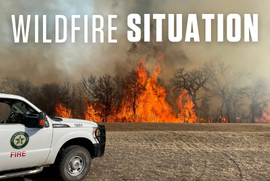 Find current wildfire activity, Texas fire potential, news and more.
 Research reinforces what much of the forestry community already knows — that trees have a positive impact on human health. Learn more.  Texas A&M Forest Service offers careers that can take you anywhere from a wildfire line defending lives and homes, to a forest protecting and conserving Texas natural resources to a computer working on a new application to create solutions for Texans across the state.
|
| NEWSROOM |
|
|
|